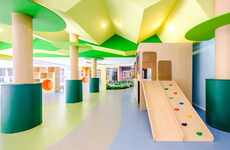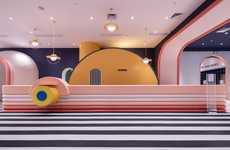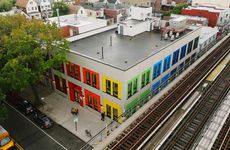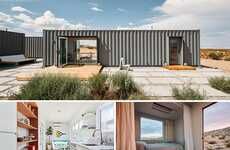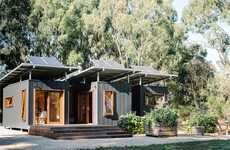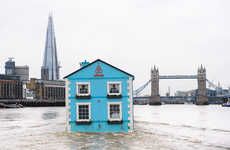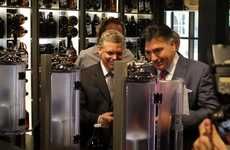
This Industrial Children's Activity Center is in Australia
Rebecca Byers — July 3, 2015 — Eco
References: architecturelab.net
The dynamic Children's Activity Center is an excellent example of the host of applications for the sustainable design movement. Designed by Phooey Architects, the activity center is located within Skinners Playground in Melbourne, Australia. The entire design process made it a priority to be as waste-free as possible.
With intended uses including dancing, painting, lounging and studying, the Children's Activity Center was conceived to be an investment in dynamic public spaces that contribute to the well-being of citizens. In any city, safe, accessible and free public spaces serve an important to role, especially for low income families.
The staggered arrangement of the shipping containers covers a subterranean extension of the center that houses the space for activities. A particularly innovative eco-friendly feature are the awning which drains rainwater into a nearby pond and reed bed.
With intended uses including dancing, painting, lounging and studying, the Children's Activity Center was conceived to be an investment in dynamic public spaces that contribute to the well-being of citizens. In any city, safe, accessible and free public spaces serve an important to role, especially for low income families.
The staggered arrangement of the shipping containers covers a subterranean extension of the center that houses the space for activities. A particularly innovative eco-friendly feature are the awning which drains rainwater into a nearby pond and reed bed.
Trend Themes
1. Sustainable Design Movement - The Children's Activity Center exemplifies the trend towards waste-free, sustainable design in public spaces.
2. Shipping Container Architecture - The use of shipping containers in the Children's Activity Center highlights the trend of repurposing these structures in innovative ways.
3. Public Space Investment - The Children's Activity Center reflects a trend towards investing in safe, accessible, and free public spaces that benefit low income families.
Industry Implications
1. Architecture - The innovative use of shipping containers in the Children's Activity Center presents opportunities for architects to explore sustainable, cost-effective building solutions.
2. Education - The Children's Activity Center showcases the potential of public spaces to provide safe and enriching educational opportunities for children.
3. Urban Planning - The Children's Activity Center reflects a growing emphasis on investing in public spaces as a way of enhancing the well-being of citizens, creating opportunities for new models and planning approaches.
5.1
Score
Popularity
Activity
Freshness


